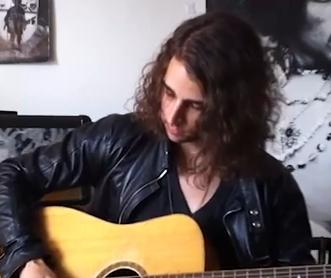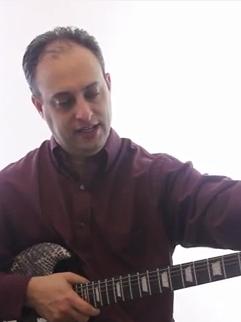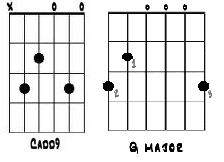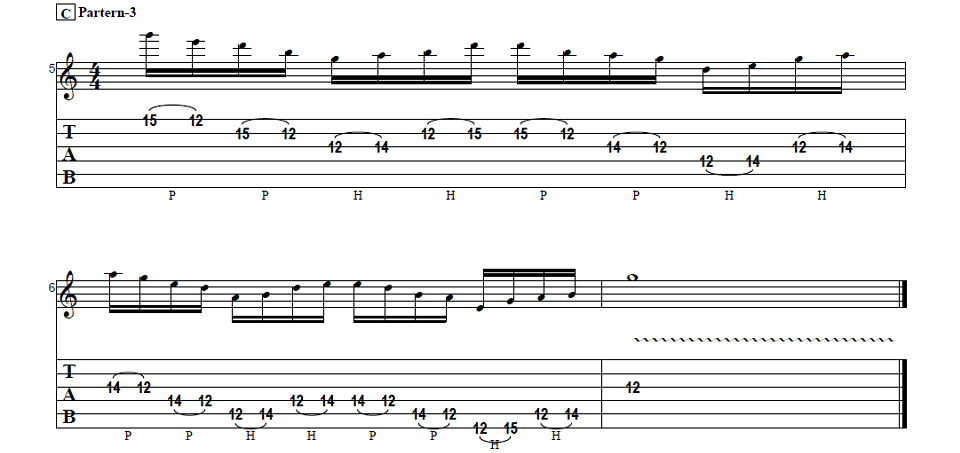Hey. Im Will. Thanks for joining me today, guys.
Ive got another cool, free guitar lesson thats
lined-up for you and another cure to common mistakes
that guitarist make when learning right here on the YouTube.
Today Ive got something really cool for you guys.
Its reading tablature. Maybe youre heard of it as
reading tabs. What a tab is, is its basically guitar
player sheet music. We dont have all those fancy notes
and stuff like that and the staff, but this is a way for
guitar players to read music. So after this lesson youre
going to be able to go online and start tracking-down some
of your favorite songs and start attacking them, learning
how to play them. Im going to show you how to read tabs
from your point of view. So lets spin this around and
check it out.
The first thing to understand about how tabs works is you
figure this out. Youve got six lines here. Each one of
those lines represent a string. What the string names are,
I have them written over here: E, A, D, G, B, E. Whats
helpful here is that weve got a big E and a small E. Now,
if you look down at your guitar, youve got a big E and a
small E. Those are the names of those two strings.
Whats confusing about tabs is that its like we split
the guitar up and then have it facing us. This is the big
string and theres the small string. Theres the big E;
theres the little E. So thats kind of the first thing
to kind of understand about tabs, is that that counts read.
It feels backwards but you get used to it pretty quick.
The cool this is that those numbers are the frets. We can
start reading this stuff right away. As long as we know what
frets are and stuff like that, and now Im talking about
that in my buzz video. So make sure to check that video if
you havent already.
All weve got to do is were just going to read left to
right just like were reading a book or anything like that.
Lets work through this riff together. Lets start with
that very first note.
So weve got a number 5 on the low E string. Lets come
over here and find the 5th fret. See if you can beat me to it.
Ill give you a tip: play it with your 3rd finger.
Now, lets look back up here. Oh, okay, weve got two 5s in
a row. So what that means is we hit this low E string twice.
The next note. Weve got 3rd fret of the A string. Now if
we go back here, okay, so that would be the next string up.
Okay, got it. See if you can beat me to it. Play that with
your 1st finger, 3rd fret. And then we go back to the 5th.
So thats pretty easy, right? Five, 5, 3, 5, with the 3
being on the A string. So it looks like this.
Now weve got 3, 1, 0, all on the low E string. The zero
would mean you hit that string, but you dont actually
have any frets going on. Another way to think about zero,
you can think of zero as always being open. So thats
kind of the rundown of working through a riff.
Now, what gets a little bit confusing with tabs is reading
chords that are tabbed. What I want to do is I want to grab
a basic G chord. Heres the thing, when weve got multiple
things playing at the same time theyre all lined-up on the
same line. You can see that we can draw a line right through
there. Now unlike this, where these are all single notes,
weve got multiple notes going on. So lets work this one out.
Third fret on the low E string, just reference this again.
Ill give you a hint; play it with your 2nd finger. Second
fret on the A string. Weve got a couple zeros for opens.
So we dont have to worry about those. And then weve got
another couple of 3s on the top string. So lets go over here.
And now we have that other 3, grab this guy and put it on there.
Thats what a G chord would look like on a tab. That sounds like that.
So thats really the only kind of confusing thing about tabs
is when weve got multiple numbers lined-up on the same line
and then were playing more than one string at the same time.
Thats the basic rundown on how to read single notes and read
chords in tabs.
Now there are just a couple things to remember about tabs.
Tabs do not tell you a couple of things. It doesnt tell you
rhythm, it doesnt tell you which fingers to use and those
are some pretty big things a tab doesnt tell you.
Now, as you can see, in some of these 9ths weve got tabs,
weve got we do have some rhythmic notations. So in the
case that you know how to read rhythmic notations, this stuff
will come in pretty handy.
I hope you enjoyed todays video. Im going to be releasing
more of them like this. So keep on ripping it up.





